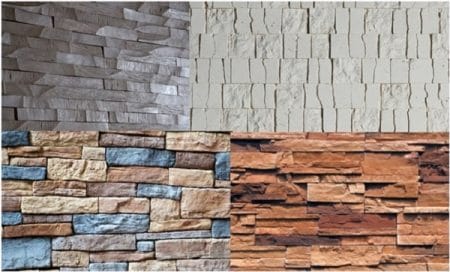What is Artificial Stone? Its Types and Applications
What is artificial stone?
Artificial stone, which is also called casted stone, is constructed from cement, sand , and natural aggregate such as crushed stone. it is possible to provide certain surface textures to artificial stones.
Sometimes, specific pigments used to achieve certain color. The addition of pigments shall not exceed 15% by volume.
Artificial stone can be cast into complicated and considerably detailed forms and various sizes can be manufactured. Added to that, it can be reinforced to increase strength.
Finally, it is worth mentioning that artificial stones are casted easily and economically.

Figure 1 Artificial Stone
Artificial Stone Mix Ratio
Generally, cement and aggregate are mixed in proportion 1:3.
When artificial stones are selected for building constructions?
Artificial stone or cast stone will be used for construction when cost effective and durable natural stone cannot be achieved.
What are the types of artificial stones?
Different types of artificial stones along with their constituent materials and applications will be discussed briefly.
Ransom stone
It is also called chemical stone which its compression strength is at least 32 MPa. Ransom stone is manufactured by blending silica soda with cement to provide fancy and ornamental flooring.

Figure 2 Artificial Ransom Stone
Concrete block
Concrete blocks are used for the construction of steps, window, sills, and piers. It is cased in the construction site.
Artificial marble
It is constructed from Portland gypsum cement and sand using either precast or cast in situ technique.
For precast production technique, the casted artificial marble will be stripped from the mould after three days and then treated with liquid fluorite of magnesia solution at the age of five days.
After that, the stone is washed and wrapped with paper for 24 hours and treated again with the same solution, and it will be polished at the final stage at the age of 30days.
For in situ construction method, layer of prepared mixture is placed on a canvas, and the thickness of the layer shall be 1.5 mm greater than the required thickness of the stone to be constructed. The surface of the laid layer is rubbed and then polished properly.

Figure 3 Artificial Marble Stone
Bituminous stone
It is produced by impregnation of granite and diorite with refined tar. Functions of bituminous stone includes the provide wear, noise, and dust resistance stone surface.
Victoria stone
It is a granite piece which its surface is hardened by submerged the stone in silica soda for two months.
Garlic stone
Garlic stone, which is employed as a surface drains and flag stones, is produced by mixing and casting Portland cement and iron slag.
Imperial stone
The procedure used to produce imperial artificial stone includes careful washing of finely crushed granite, mixing granite with Portland cement, cast the mixture into a favored form, and finally steam cure the casted imperial stone for twenty-four hours.

Figure 4 Artificial Imperial Stone
No comments:
Post a Comment